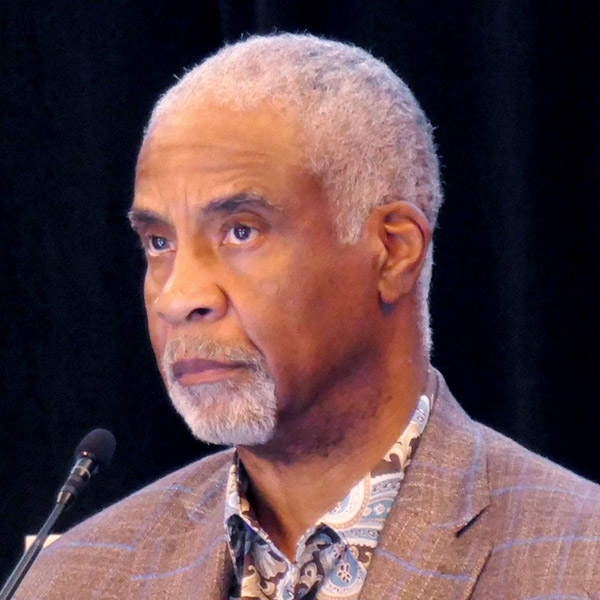By Ali Karimian
The outlook for utility-scale batteries in PJM is more complex than it has been at any point in the past decade.
While PJM historically has been seen as a market with large demand and deep industrial bases, when it came to actual deployment of batteries, investors typically found themselves confronted with unfavorable economics and slow interconnection processes.
But after the radical shifts of the past 12 months and those on the horizon, PJM is entering a new phase, marked by sharply rising capacity prices, more acute reliability pressures and a growing recognition that storage will be central to keeping the lights on.
In this article, we explore the outlook for battery storage in PJM.
Front-of-the-meter Model
In PJM, the front-of-the-meter (FTM) model traditionally has been built around two revenue pillars: frequency regulation services and participation in the capacity market.
Frequency regulation services have long been a reliable, but shallow, pool of income. PJM procures only around 600 MW of regulation as of late 2025, and as more batteries enter the market, prices soften. Most sophisticated investors therefore treat regulation revenue not as the core of a project’s value but as a bonus: useful, but not bankable.
On the other hand, the capacity market has transformed dramatically. Large numbers of fossil fuel power stations host data centers on-site, which effectively takes the capacity of the power plant out of the generation stack (in all or selected hours, depending on the data center load shape).
Electrification, particularly the expansion of data center load across the mid-Atlantic, has caused demand forecasts to spike. The result is a system that needs new, fast-responding capacity and is willing to pay for it.
The implementation of effective load carrying capability (ELCC) also has redefined how PJM values the contribution of limited-duration resources such as batteries. While the ELCC multiplier for storage is expected to decline over time as more storage joins the system, the immediate impact has been positive. In the 2025/26 and 2026/27 auctions, clearing prices surged, reflecting both the new valuation methodology and a tightening supply–demand balance.
For investors, this creates a more predictable and meaningful revenue floor for battery assets than at any time in recent memory. But capacity revenues alone are not the full story.
One of the reasons arbitrage historically has been weak in PJM is the region’s modest penetration of variable renewables on the system. Unlike California or Texas, PJM does not yet experience deep mid-day solar troughs or abundant periods of near-zero marginal-cost generation.
Arbitrage opportunities in such markets are driven by predictable, repeated patterns of low prices (when renewables flood the system) and high prices (when that renewable output fades). Without this dynamic, PJM’s price spreads have been comparatively shallow, limiting the upside. But this, too, is beginning to change.
As demand volatility increases, the frequency and magnitude of price swings is increasing. While PJM may not yet have the solar-driven volatility of CAISO, it is experiencing more meaningful peak-period scarcity pricing, which creates valuable opportunities for well-optimized storage assets. Even so, arbitrage remains secondary to capacity in the current environment; it is not yet the engine that can justify a standalone FTM build.
For many, these dynamics raise an inevitable question: If regulation is shallow, arbitrage still is emerging, and ELCC eventually may decline, is the FTM model fundamentally flawed in PJM? The answer is no, but it is evolving.
FTM storage requires a diversified revenue stack and a careful understanding of regulatory timing. The surge in capacity prices has revived interest in the model, and interconnection reforms are clearing some of the historic backlog.
Even so, the risks remain real: Interconnection queues are long, drop-out rates high, and market design still lags the reality of the grid’s need for flexible, fast-ramping assets. Ancillary-service saturation is a threat. Investors must approach FTM with eyes wide open.
Behind-the-meter Storage Tells a Different Story
When batteries sit behind large industrial or commercial loads, they deliver guaranteed value through peak shaving, demand-charge reduction and resilience benefits. Behind-the-meter (BTM) economics for battery storage are not tied primarily to wholesale-market conditions.
A factory, data center or distribution facility with high load during PJM coincident peaks can materially reduce its future capacity and transmission costs by deploying a battery, even without ever participating in regulation or arbitrage. As capacity and transmission prices surge, these avoided costs become even more valuable.
For businesses that control meaningful load, the BTM business case can be compelling, and dependably so. For businesses with large industrial loads, this means batteries can function as financial instruments as much as technological ones: tools for cost avoidance, resilience enhancement and participation in high-priced wholesale services.
Hybrid Structure Most Interesting
But the most interesting model today is neither pure FTM nor conventional BTM. Substation-located batteries, sometimes described as non-retail behind-the-meter generation (NRBTMG), offer a hybrid structure that combines the strengths of both.
When placed at a substation, a battery can offset the substation’s load during peak periods, yielding predictable cost savings while also participating in PJM’s markets when capacity, energy or regulation prices create favorable conditions. This effectively creates a dual-revenue structure: part risk-protected through peak-load reduction, part exposed to wholesale upside. It is a model that makes intuitive sense in a region like PJM, where system needs are rising but market design still leaves certain storage services undervalued.
Although it requires more careful stakeholder engagement and interconnection planning, it ultimately may prove to be the most economically resilient approach for storage developers.
The Market Signal is Strong
For the first time in PJM history, the market signal for flexible capability is strong, consistent and grounded in clear system need.
Studies from The Brattle Group suggest PJM needs roughly 16 GW of new four-hour energy storage by 2032 simply to maintain reliability standards. Rising peak loads, extreme weather and the rapid proliferation of data centers are shifting PJM’s risk profile fast enough that storage no longer is optional; it is becoming essential.
The most recent PJM capacity auction results, which hit the price cap in many zones, reflect that urgency. Despite this, deployment remains slower than required. PJM’s interconnection queue contains many gigawatts of proposed storage projects, but attrition rates remain high.
A combination of lengthy studies, shifting cost structures and evolving rules continue to impede progress. PJM needs storage, but its market structures and regulatory processes still make it challenging to build. This tension between system need and market execution is one of the defining features of the storage landscape today.
But the trajectory is unmistakable:
-
- Capacity prices have reset to a sustainably higher level.
- Policy reforms are accelerating.
- Renewable penetration is increasing.
- Industrial electrification is proceeding faster than many expected.
PJM stakeholders increasingly are motivated to deploy storage not only for market participation but for cost management, reliability and energy security.
In short, the outlook for utility-scale batteries in PJM is one of cautious but tangible optimism. The optimal storage strategy in PJM is not to chase a single revenue stream, but to design assets capable of capturing multiple forms of value. The strongest projects will be those that can respond dynamically to capacity price signals, exploit emerging arbitrage opportunities, deliver ancillary services when prices spike and directly reduce peak load.
Ali Karimian is market optimization director of GridBeyond, which just released its Global Energy Trends 2026 report.

